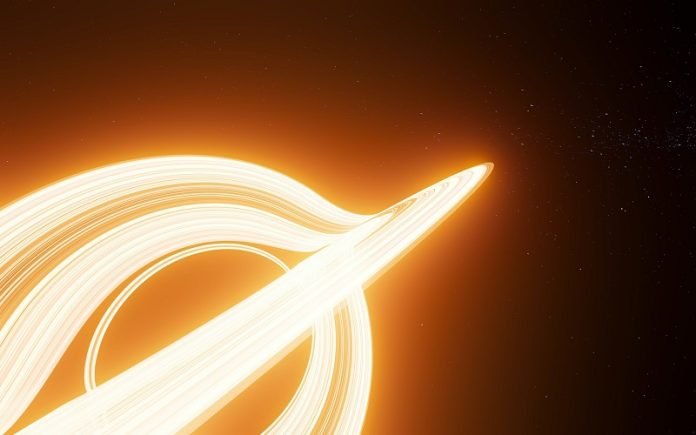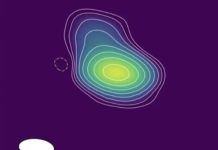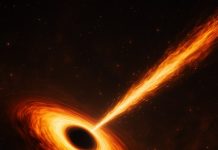
Astronomers from Purdue University have discovered an incredibly bright and energetic star being torn apart by a supermassive black hole.
They found this remarkable cosmic event hidden in a large amount of telescope data collected by computers over the years.
Danny Milisavljevic, an assistant professor of physics and astronomy, said this event is so bright that it’s thousands of times brighter than a typical supernova.
Supernovas are already among the most luminous objects in the sky, so this discovery is extraordinary.
The event was named ZTF20abrbeie, or “Scary Barbie,” because of its unusual characteristics. It’s a “transient” object, meaning it appears, disappears, or changes significantly over a short period of time.
In a study, the researchers concluded that the bright, long-lasting event is caused by a black hole consuming a star.
Bhagya Subrayan, a graduate student on the team, explained that a supermassive black hole is pulling a star apart through a process called “spaghettification.”
This event is unique because it involves an extremely massive black hole tearing apart a massive star and lasts longer than any other similar event ever observed.
Scary Barbie was discovered using an AI engine developed by Milisavljevic’s lab, called the Recommender Engine For Intelligent Transient Tracking (REFITT). This engine analyzes huge amounts of data from various telescopes around the world, such as the Zwicky Transient Facility at the Palomar Observatory in California.
This bright and energetic event has lasted for more than 800 days, which is much longer than typical transient events that last only weeks or months. Because the event is so far away, the light reaching us appears to last longer due to the laws of relativity.
The discovery of Scary Barbie shows that scientists are still uncovering new cosmic mysteries and exploring amazing wonders in the universe. The research was partly funded by the National Science Foundation.



